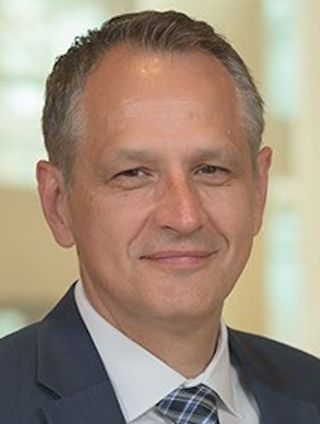While AV/IT convergence happened a while ago, creating synchronicity between AV and IT support teams still remains a challenge. When team members in both groups are knowledgeable in each other’s specialties, however, it stands to reason that the end user’s experience is that much better. The trick is establishing cross-training that not only expands the organization’s AV/IT knowledge base, but also recognizes when a more seasoned specialist is needed to provide support.
Miro Humer, associate vice president of client experience at Case Western Reserve University in Cleveland, oversees a broad spectrum of AV and IT operations, including enterprise applications, digital media, classroom support, system architecture, project management, and the IT helpdesk. He explained that the university’s AV and IT support teams don’t work in separate bubbles; AV follows IT service management processes, such as the ticketing system. “They are part of our regular support cycle, and if they’re rolling something out, they include our IT group and they lead the effort on how to cross-train IT on it, and they also lead the effort on the training of our faculty,” he said. He clarified that while the AV team doesn’t conduct the training, it does define what needs to be covered during training sessions.
In his role as director of technical services at Wentworth Institute of Technology in Boston, Tristan Cary oversees IT and AV helpdesk support, as well as the school’s laptop program. “One of the things that we tried to do early on was we tried to make everyone fluent in everything else; we had this idea that IT people and AV people should be able to do each other’s jobs and help [each other] out,” he said. After a while, however, it became clear that while some tasks were interchangeable, there was still a need for subject matter experts in each domain. “There is always going to be our AV people that understand the ins and outs of classroom technology, and the Crestron programming language and ecosystem, and exactly how every single component in the room works,” he said. Still, the members of his IT team have enough familiarity with classroom systems that they are capable of doing basic troubleshooting and support, with AV specialists taking up the reins in the event of a major failure.
Basic Best Practices

Humer counsels organizations to train IT specialists on systems such as Crestron and AMX, while at the same time providing education to AV staff on networking, telephony, and enterprise operating systems. “In both cases the focus should include key terms and conditions unique to the location’s IT and AV environments,” he said. He also emphasized the need for regular communication between both teams. “At CWRU, we conduct a regular meeting between our deskside support team and our classroom AV support team to discuss current issues, future projects, and overall needs.”
Hands-on training is also something Humer encourages tech managers to provide: “The best way to troubleshoot an AV or IT problem in the field is to understand the audio or video signal, or the network flow, from start to finish,” he said. “Beginning at a basic level and advancing over time, IT and AV expertise can evolve and spread through the teams, resulting in an improved culture and advanced technical agility, creating a positive, total client experience for the end user.”
Know When to Keep Them Separate
While Case Western’s AV/IT teams work under one umbrella, there is somewhat of an exception to this rule when it comes to the work performed by the digital media group in the university’s Samson Pavilion, a 500,000-square-foot building that houses medical sciences facilities, including a school of medicine, a school of nursing, and a school of dental medicine. With three control rooms, an auditorium featuring a 40-foot video wall and audio support (including microphones) at every seat, and sophisticated classroom recording systems, Humer said that this building requires highly trained, dedicated AV staff.
“The rest of the campus is pretty standard: [in each classroom] we have a projector, a document camera, and a PC, and maybe a camera to record the sessions,” Humer said. “The level of technology in [the Samson Pavilion] is much higher, and the AV skill set [required] is much more technical than in any other area on campus, and so this is the building where we have a distinction between AV and IT tech.”
At the same time, Humer said that a great effort is made at keeping the two teams in sync. “They meet regularly; they talk about their issues, what kind of help they need, and [they do] cross-training on some of the triage-type things,” he said. Typically, support calls are directed to the IT group, which dispatches a tech to perform a primary assessment to determine if IT can fix the issue, or if deeper AV skills are required to resolve the problem. “The training is really based on that initial evaluation, because we have a larger IT support staff than we do AV, and we want to make sure we’re making the best use of the AV skills that we have.”
Standardization Helps

Cary relayed that at the beginning of each semester, AV and IT support teams perform a walkthrough of the classrooms to refresh their familiarity with the systems. He noted that almost all of the classrooms at Wentworth are equipped with the same user interface. He said this not only makes it easier for users traveling from room to room, but it also streamlines helpdesk support. “If someone calls and says, ‘I’m having a problem in this room,’ we don’t have to look up that specific room to see what’s in there,” he said.
Communicate, Then Communicate More…
Regardless of an organization’s specific needs, Humer underlined that if AV/IT teams adopt an “us and them” attitude, it can lead to territorial disputes. “As long as a wall is allowed to exist between the AV and IT teams at any level, technology coordination of the environment will be difficult,” he said. “If they remain separate and don’t have that communication, they develop their own reasons and stories on why things are or aren’t happening. As long as they talk, those stories don’t get created in a vacuum.”
…and Start Small
For those organizations that are launching AV/IT cross-training initiatives, Cary said a simple start is the best approach. “Really focus on core competencies, and don’t expect everyone to pick everything up all at once,” he said. “Just like everything, it’s education, it takes time, it takes patience, it takes practice, and especially in the environment we’re in, it’s very hard to have a full-time IT person shadow a full-time AV person, so you’re going to have to take that into account as well. Look at what your top three or five issues are, focus on those, and then start expanding that knowledge base out and start going into more of the nitty-gritty.”
COVID-19: Lessons Learned
With the pandemic mandating major changes pretty much overnight—especially for organizations that hadn’t previously supported remote learning and work to a large extent—it’s demonstrated how important it is to be able to adapt to change quickly. “I think we’ve learned where we can make things more flexible: what we need to do, how we upgrade our classrooms, what kind of technology we implement,” Humor said. “We have to remain flexible, and we have to be ready for whatever the future brings, [and] that everything we implement is as flexible as possible.”
Carolyn Heinze is a freelance writer/editor.













